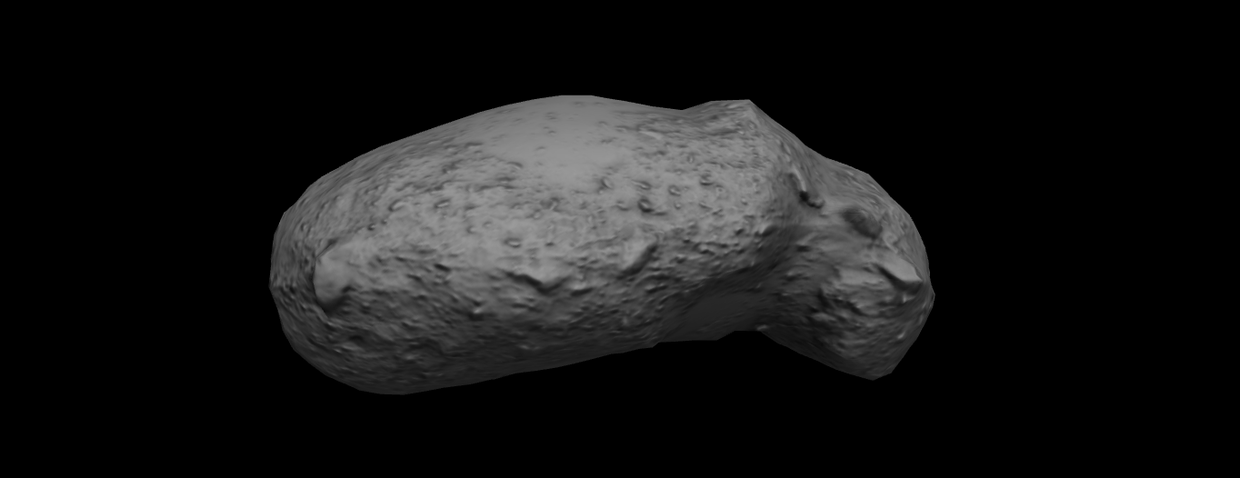
Aug. 1, 2023
Research Highlight
Evidence of Past Fluid Activity on Asteroid Itokawa
A 3D model of asteroid Itokawa.Image credit: NASA Visualization Technology Applications and Development (VTAD).
NASA-supported researchers studying samples from the Japanese Hayabusa mission have shown that, contrary to previous thought, S-type asteroids might deliver water to potentially habitable planets.
Meteorites are thought to have been an important source of water for the early Earth. In particular, meteorites known as carbonaceous chondrites contain evidence that liquid water once interacted with the material from which they were formed. Studies of carbonaceous chondrites have shown that their parent bodies (C-type asteroids that the meteorites are fragments of) once supported hydrothermal systems. In comparison, previous studies of meteorites that originated from S-type asteroids have indicated that these rocky bodies were relatively dry.
The Japanese Hayabusa mission collected samples from an S-type asteroid named Itokawa. When examining these samples, the team of scientists found nanometer-sized crystals of sodium chloride (NaCl) that contradict the idea that S-Type asteroids in the early Solar System were dry. Traces of NaCl in Itokawa were intimately associated with minerals that indicate an origin in aqueous fluid. The results suggest that Itokawa could have supported an active hydrothermal system, changing the way that scientists think about the potential for S-type asteroids to carry liquid water.
The study, “Hydrothermal fluid activity on asteroid Itokawa,” was published in the journal Nature Astronomy.
